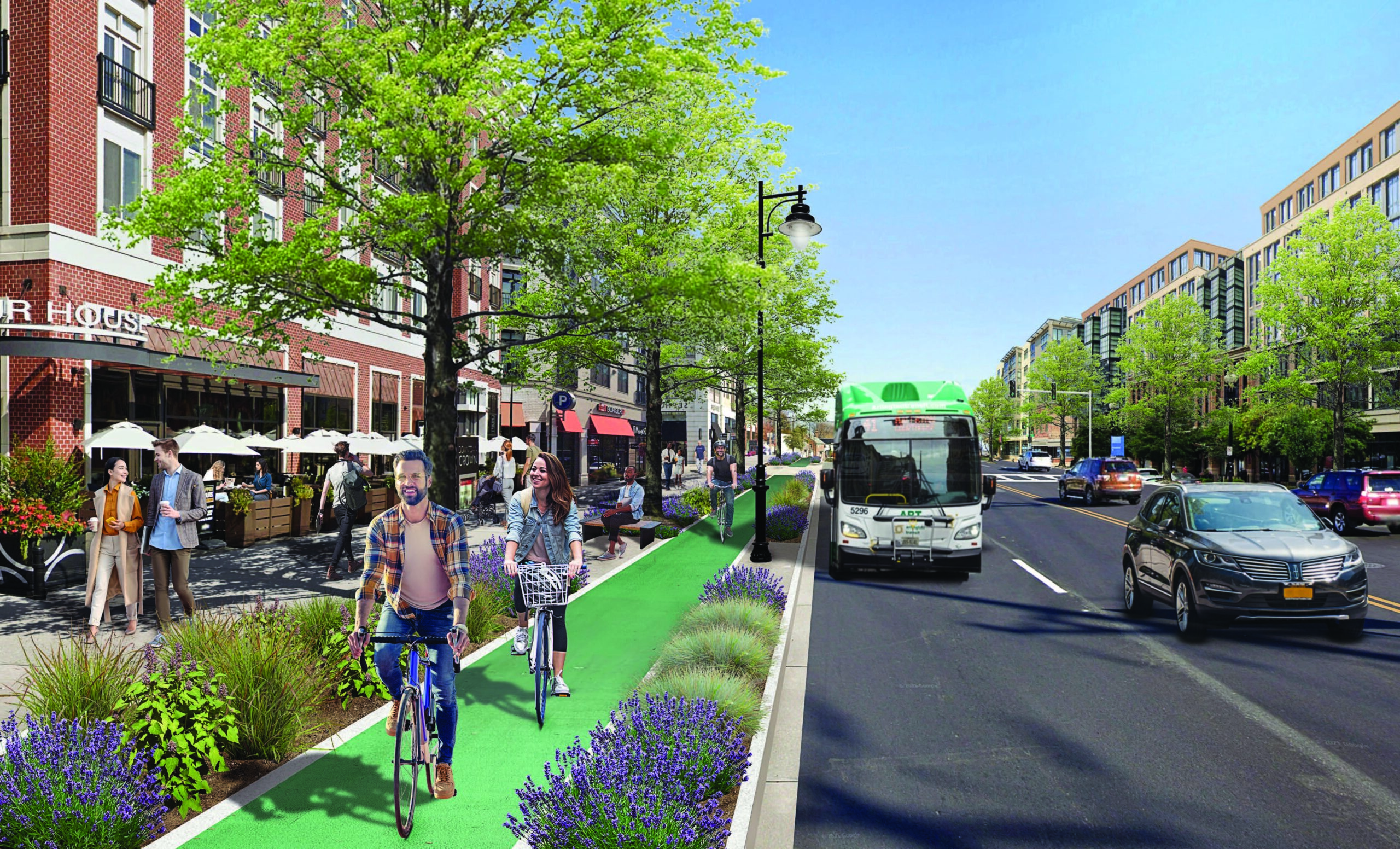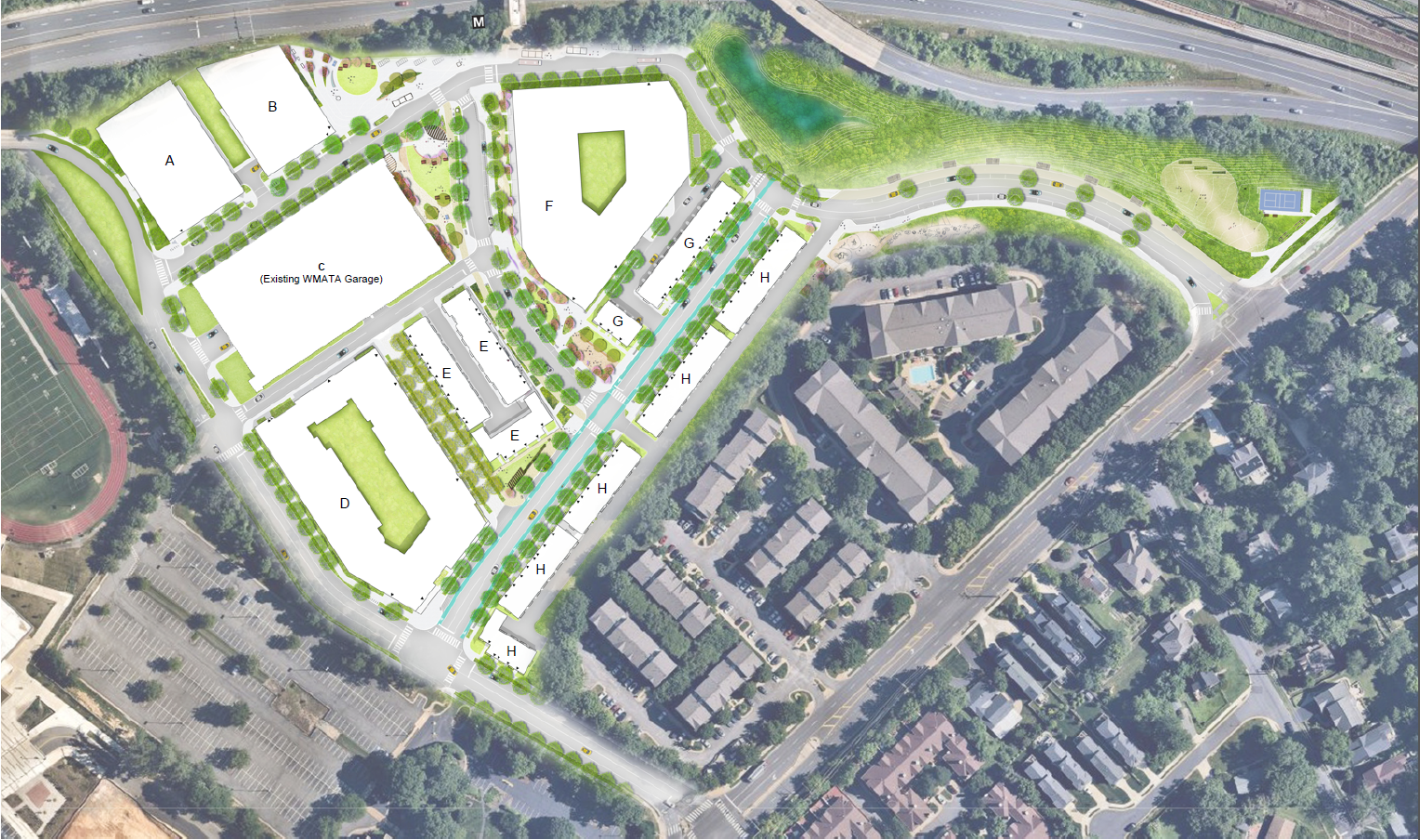 On June 27, 2023, the Fairfax County Board of Supervisors approved a request by Falls Church Gateway Partners – Metro LLC (“FCGP”) for a rezoning, conceptual development plan, and final development plan for the redevelopment of the approximately 24-acre West Falls Church Metrorail Station site.
On June 27, 2023, the Fairfax County Board of Supervisors approved a request by Falls Church Gateway Partners – Metro LLC (“FCGP”) for a rezoning, conceptual development plan, and final development plan for the redevelopment of the approximately 24-acre West Falls Church Metrorail Station site.
FCGP is the joint development partner selected by the Washington Metropolitan Area Transit Authority (“WMATA”) to redevelop the site, is comprised of three members: ME Homes Associates, LLC (an affiliate company of EYA, LLC), Rushmark West Falls, LLC (an affiliate of Rushmark Properties, LLC), and HA FC Metro LLC (an affiliate of Hoffman & Associates).
The station, which has long served commuters since it opened in 1986, today consists of a transit bus loop, a parking garage and large surface lots, older infrastructure, access roads, and a stormwater management pond.
Like Fairfax County’s other Orange Line and Blue Line stations, the West Falls Church was originally constructed during an era in which the County prioritized automobile-oriented commuter accessibility over walkable mixed-use transit-oriented development.
Once among the busiest Metrorail stations, ridership at West Falls Church declined precipitously following the 2014 completion of Phase 1 of the Silver Line. This reduction led WMATA to file a request for an amendment to the Fairfax County Comprehensive Plan (Plan Amendment 2018-II-1M) to transform the Metrorail site into a higher-density, pedestrian-oriented neighborhood.
WMATA’s request was subsequently consolidated with a separate request by Virginia Tech to redevelop its adjacent 7.5-acre Northern Virginia Center site. Following a two-year community review process, the Comprehensive Plan amendment was adopted by the Board of Supervisors on July 13, 2021.
As approved, the redeveloped Metrorail site will include up to 1,001,105 square feet of new development, consisting of between 720 and 810 multifamily units, 110,000 square feet of office uses, and 10,000 square feet of ground floor retail and active uses.
Representing a major step forward in implementing the Comprehensive Plan, the project will complement the nearby “West Falls” development, which is under construction on the approximately 10-acre former George Mason High School site in the City of Falls Church. When taken together, the three sites are anticipated to evolve into a larger 42-acre inter-jurisdictional neighborhood that will not only be transformative but offer an inter-jurisdictional land use planning model entirely unique in Virginia.
Substantial infrastructure and safety upgrades will be provided for the benefit of riders, including improved pedestrian and vehicular access to the station, and a separation of the three primary WMATA vehicular facilities (Park-and-Ride, Kiss-and-Ride, and the bus drop-off). New utilities, sidewalks, streetscapes, bus shelters, wayfinding signage, and bicycle infrastructure will also be constructed.
Given the site’s highly visible location, the FCGP emphasized the need for high-quality publicly accessible open spaces, including a series of civic plazas, pocket parks, linear parks, hardscaped areas, a dog play area, and a nature-oriented recreation play area. A variety of streetscape activation and placemaking elements will also be provided.
Housing affordability figured prominently into the project, which will meet the West Falls Church Comprehensive Plan’s heightened affordable housing and workforce housing policy objective of providing 15 percent of for-sale units (based on the proposed 0.96 FAR) as affordable and 10 percent of the rental units as either ADUs or WDUs.
From a transportation perspective, the project will implement the adopted Comprehensive Plan’s street grid and pedestrian pathway system connecting this site to the Virginia Tech and West Falls sites. Of critical importance, a key piece of West Falls Station Boulevard will be constructed, which will serve as a parallel street to Haycock Road and will provide mobility between the West Falls, Virginia Tech, and WMATA sites.
Offsite transportation improvements will include upgrades to the existing Haycock Road Bridge over Interstate 66, improvements to the intersection of Haycock Road and Great Falls Street, a new right-turn lane on Grove Avenue, and signal timing upgrades at four nearby intersections.
Substantial vegetation and landscaping will be provided across the site and the project exceeds County requirements in terms of tree cover, open space, publicly-accessible open space, tree preservation, and phosphorous removal.
The project will also meet the West Falls Church Comprehensive Plan’s heightened stormwater management goals, with a 40 percent reduction in stormwater runoff below predevelopment conditions through the use of urban bioretention facilities, manufactured treatment devices, and underground vaults.
This vibrant, attractive, and transformative project is anticipated to substantially increase Metrorail ridership and reduce automobile dependency. It will fulfill the Comprehensive Plan’s vision for a high-quality mixed-use development, generate economic vitality, and provide much needed diverse housing opportunities.
Walsh Colucci shareholder Andrew Painter and land use planner Bernard Suchicital assisted FCGP throughout the process.
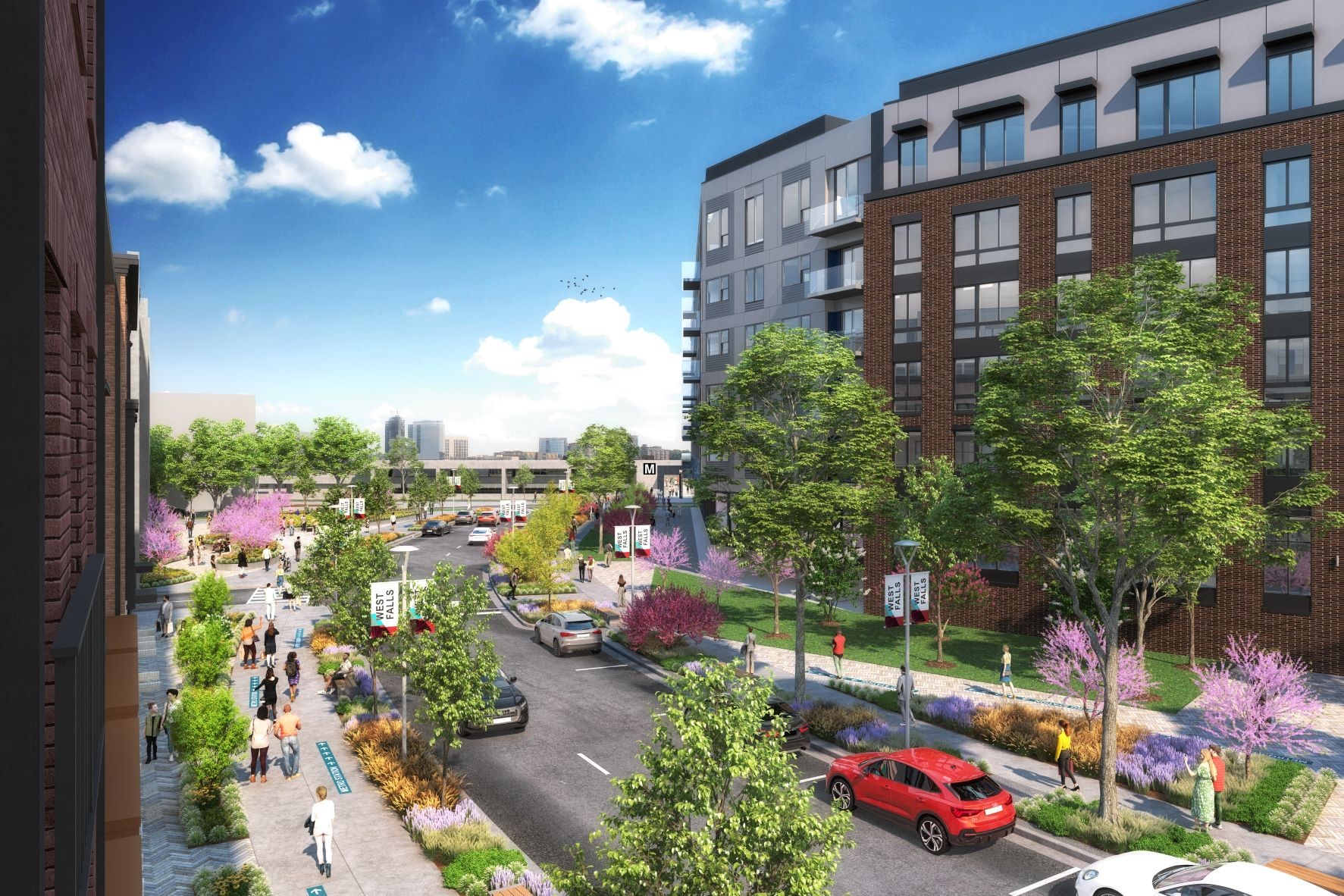

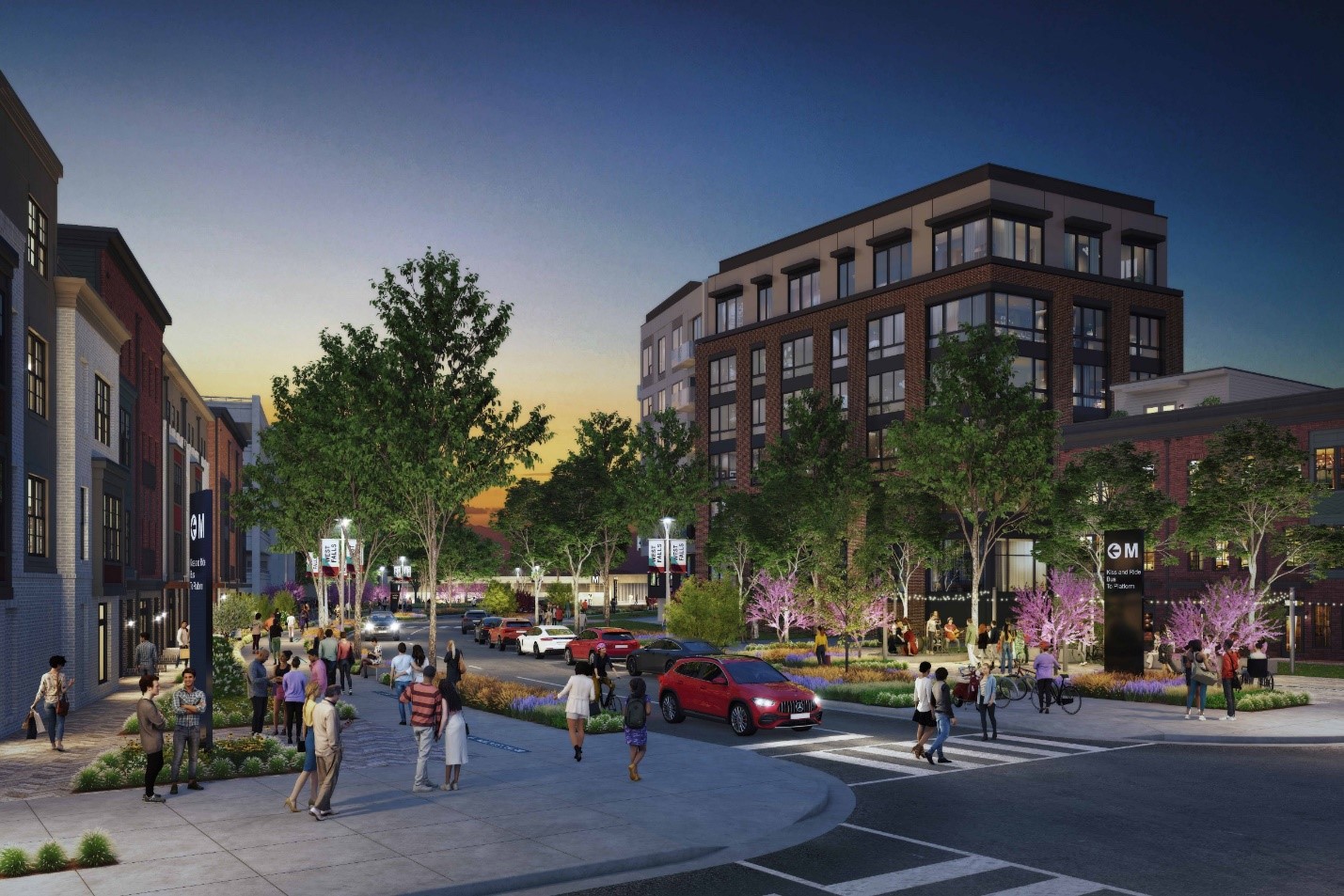
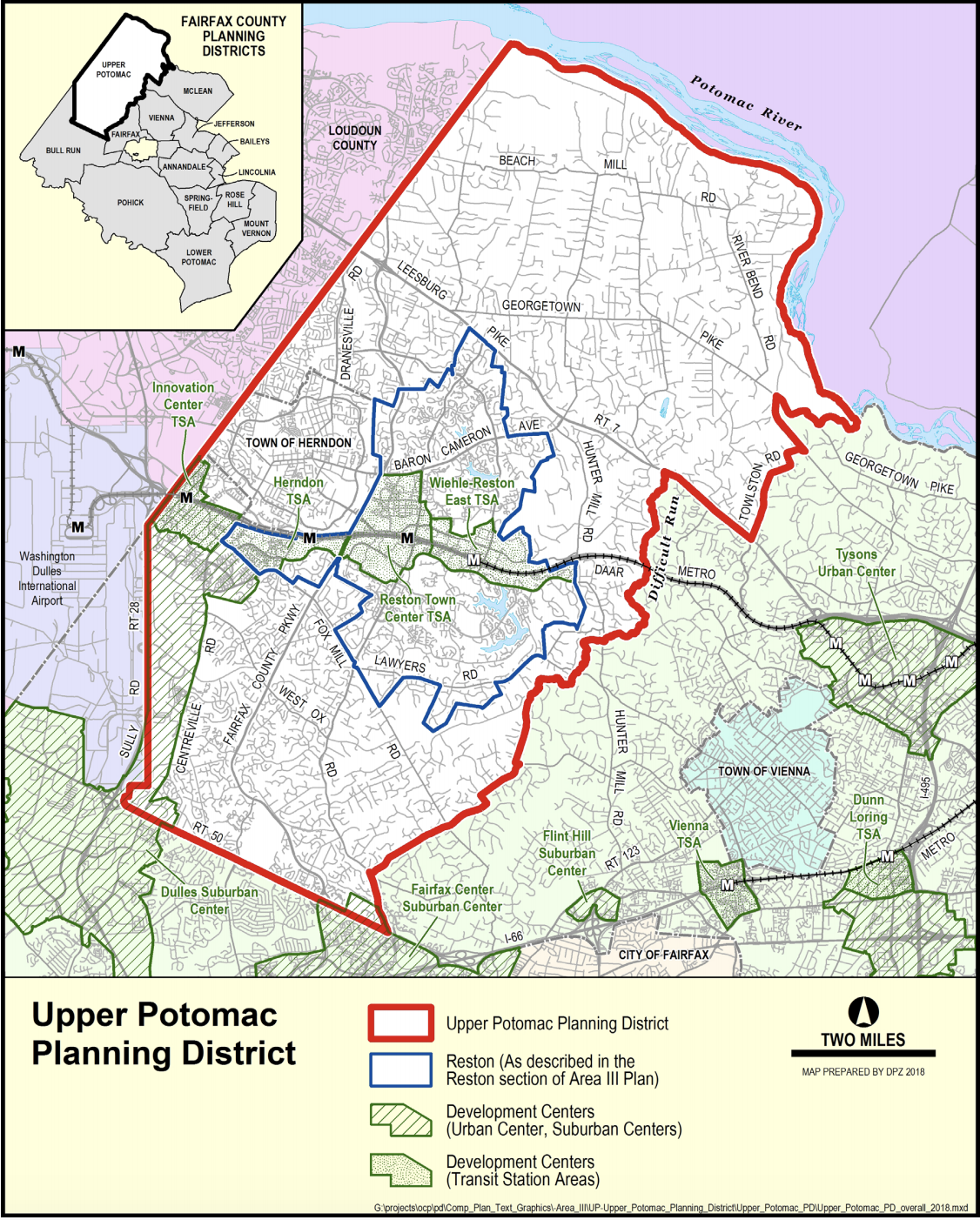



 On June 27, 2023, the Fairfax County Board of Supervisors approved a request by Falls Church Gateway Partners – Metro LLC (“FCGP”) for a rezoning, conceptual development plan, and final development plan for the redevelopment of the approximately 24-acre West Falls Church Metrorail Station site.
On June 27, 2023, the Fairfax County Board of Supervisors approved a request by Falls Church Gateway Partners – Metro LLC (“FCGP”) for a rezoning, conceptual development plan, and final development plan for the redevelopment of the approximately 24-acre West Falls Church Metrorail Station site.


